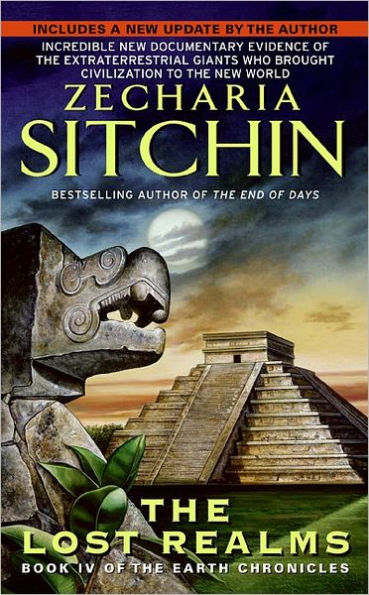In the sixteenth century, Spanish conquerors came to the New World in search of El Dorado, the fabled city of gold. Instead, they encountered inexplicable phenomena that have puzzled scholars and historians ever since: massive stone edifices constructed in the Earth's most inaccessible regions . . . great monuments forged with impossible skill and unknown tools . . . intricate carvings describing events and places half a world away.
Who were the bearded "gods of the golden wand" who had brought civilization to the Americas millennia before Columbus? Who were the giants whose sculpted stone heads in Mesoamerica still mystify to this day?
In this remarkably researched fourth volume of The Earth Chronicles, author and explorer Zecharia Sitchin uncovers the long-hidden secrets of the lost New World civilizations of the Olmecs, Aztecs, Mayas and Incas, and links the conquistadors' quest for El Dorado to the extraterrestrials who searched there for gold long before.
In the sixteenth century, Spanish conquerors came to the New World in search of El Dorado, the fabled city of gold. Instead, they encountered inexplicable phenomena that have puzzled scholars and historians ever since: massive stone edifices constructed in the Earth's most inaccessible regions . . . great monuments forged with impossible skill and unknown tools . . . intricate carvings describing events and places half a world away.
Who were the bearded "gods of the golden wand" who had brought civilization to the Americas millennia before Columbus? Who were the giants whose sculpted stone heads in Mesoamerica still mystify to this day?
In this remarkably researched fourth volume of The Earth Chronicles, author and explorer Zecharia Sitchin uncovers the long-hidden secrets of the lost New World civilizations of the Olmecs, Aztecs, Mayas and Incas, and links the conquistadors' quest for El Dorado to the extraterrestrials who searched there for gold long before.

Lost Realms
320
Lost Realms
320Paperback(Mass Market Paperback - Reprint)
Related collections and offers

Product Details
| ISBN-13: | 9780061379253 |
|---|---|
| Publisher: | HarperCollins Publishers |
| Publication date: | 03/27/2007 |
| Series: | Earth Chronicles Series |
| Edition description: | Reprint |
| Pages: | 320 |
| Sales rank: | 60,452 |
| Product dimensions: | 4.18(w) x 6.75(h) x 0.64(d) |
About the Author
What People are Saying About This
Customer Reviews
Explore More Items
The mighty powers invoked by this eldritch tome are really long-forgotten psychic abilities, able to affect the most basic needs and desires, including Love, Wealth, Peace of Mind, and Protection
Everything You Always Wanted to Know About Ghosts, but Were Too Afraid to Ask
From a very young age James Van Praagh was aware of a dimension that most of us cannot see, and he has dedicated his life
Humans have long been concerned with the ultimate clash of civilizations, but never more so than now. Religious wars, global terrorism, and genocide have all helped to usher in the Anxiety Age. Who
Author and award-winning Journalist Jim Marrs has uncovered compelling new evidence regarding extraterrestrials-that alien life forms have not only visited our planet in the
A breathtaking exposé that reads like a thriller, The Day After Roswell is a stunning depiction of just what happened in Roswell, New Mexico all those years ago and how the effects of this
